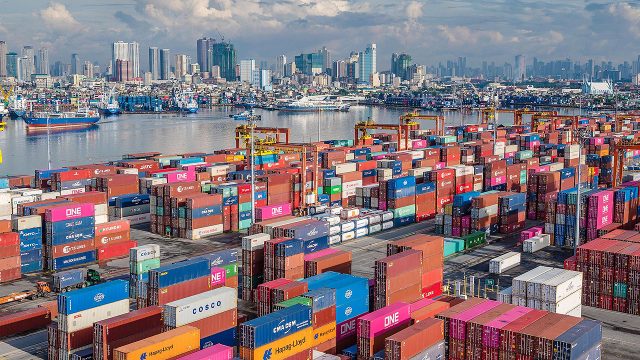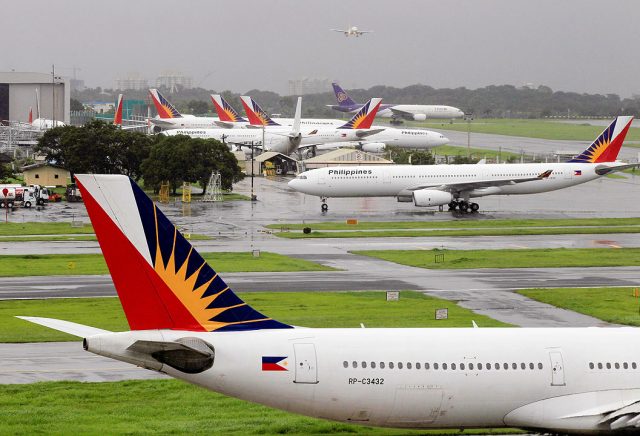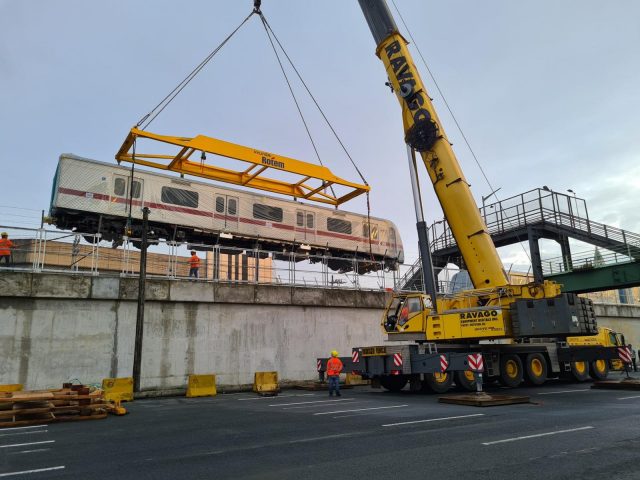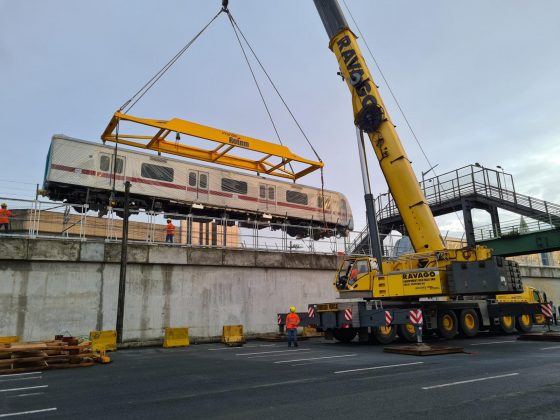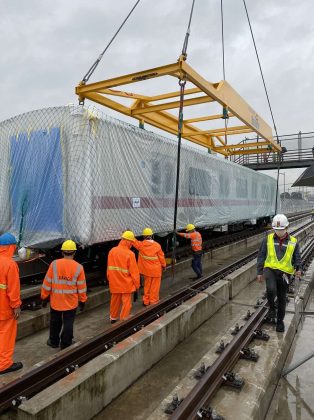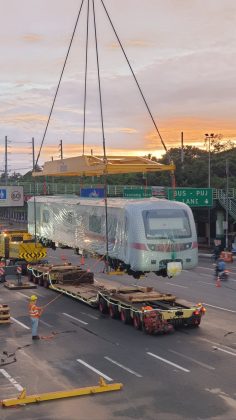THE RX is said to be the very first luxury crossover SUV to proudly wear the Lexus badge. When it debuted in 1998, it “laid the foundation for what would be a highly successful nameplate.” In the Philippine market, the RX remains the brand’s most popular model.
LEXUS
“The RX fits right into an active lifestyle with a sophisticated blend of the comfort of a luxury car and the driving pleasure and added convenience of a high-riding SUV. It asserts its presence on a variety of roads and diverse driving conditions,” declared Lexus Philippines in a release. This month, Lexus offers zero interest deals on RX models, payable over 36 months.
The RX 350 (P4.438 million) blends the comfort of a luxury car with the driving pleasure and added convenience of a high-riding SUV. Powered by a 3.5-liter V6 direct-injection engine mated to an eight-speed automatic transmission, it gets Adaptive Variable Suspension which continually adjusts shock absorber damping rates in real time.
The RX 350 F Sport (P4.998 million) shares the spirit of the LFA supercar. This model gets F Sport dials with full-length illuminated needles. The cabin is decked out in dimpled leather with an exclusive perforated finish on the steering wheel and shift knob. It also receives aluminum pedals exclusive to F Sport models.
The RX 450h (P5.238 million) features Lexus Hybrid Drive which draws power from both electric and petrol motors, resulting in instant torque and rapid acceleration. An EV drive mode at slow speeds promises a silent and emission-free drive. A self-charging full hybrid system features a 3.5-liter direct injection V6 gas engine, and boasts a total system output of 308hp. Key components and control systems in the Lexus Hybrid Drive System were improved and re-engineered to deliver class-leading fuel economy, minimal emissions, and excellent on-road performance.
The RX 350L (P4.918 million) is the seven-seater version of the RX. The third row has an automatic slide function and can be easily adjusted to achieve the optimal legroom. Third-row passengers also have the luxury of their own climate controls.
For more information, visit the Lexus website at lexus.com.ph or the @lexusmanila social media pages on Facebook and Instagram. To arrange a consultation with a personal sales consultant, visit the Lexus Remote page.
SUZUKI
SUZUKI PHILIPPINES, Inc. (SPH) announces the holding of its “Four the Win” promotion this month. Running until Sept. 30, the campaign involves four of the brand’s popular models: the Swift, Celerio, Ciaz, and Vitara AllGrip — each offered via low down payment options and with generous discounts.
“Now more than ever is the time for us in Suzuki Philippines to show that our customers play an integral part in all our achievements as a company,” said SPH Vice-President and General Manager for Automobile Keiichi Suzuki. “Owning a car is a winning moment in a person’s life, that’s why we remain committed in assuring that our products are made accessible to meet every lifestyle for the modern-day Filipino. We are truly excited and optimistic that with the promos we offer, we may be able to help uplift the quality of life on the roads for our countrymen.”
Offering generous interior space and heightened comfort, the Suzuki Celerio features a high seating position and expanded visibility. The hatchback is highlighted by best-in-class luggage capacity. SPH is accepting a down payment as low as P29,000 for the Celerio CVT, and also offers a discount of up to P60,000.
The iconic Suzuki Swift, on the other hand, bears a sporty look to go with its spirited performance. It has a racecar-like D-shaped steering wheel, front seats that firmly hold, and a center console angled toward the driver. Customers may bring this home with a down payment as low as P29,000, and enjoy cash discounts of up to P80,000.
The Ciaz sedan, updated recently, gets LED headlamps and a stylish front grille. Powered by a 1.4-liter petrol Engine, the sedan can be had for as low as P49,000 down payment and with a P70,000 cash discount. Finally, the Suzuki Vitara AllGrip SUV, which banners a “superior interior and refined, advanced features,” is offered for a low down payment of P90,000. A cash discount of up to P70,000 is also extended to buyers.
For more information, visit any of the 71 authorized Suzuki Auto dealerships nationwide or visit http://suzuki.com.ph/auto/. For daily updates on Suzuki, like the Suzuki Auto Philippines Facebook page at https://www.facebook.com/SuzukiAutoPh, and follow the company on Twitter at https://twitter.com/SuzukiAutoPh and Instagram at @suzukiautoph.
MITSUBISHI
MITSUBISHI MOTORS Philippines Corp. (MMPC) said it is giving customers an advance Christmas gift with its September Blowout Promo. Until Sept. 30, the company is serving up low down payment deals on the Mitsubishi Mirage, Xpander, Strada, Montero Sport, and L300.
The Mitsubishi Mirage subcompact, powered by a frugal yet adequate 1.2-liter engine, can comfortably seat five adults and has a flexible folding second row that allows the carrying of uneven-sized cargo. The Mirage is available with a low all-in P28,000 down payment.
Offering “practicality without sacrificing flair,” the Mitsubishi Xpander Cross is among the most stylish and sporty MPVs available in the market. The Xpander nameplate has won numerous local and international awards as its overall package ticks all the needs and wants of its customer. With a spacious interior that can accommodate up to seven passengers, it also boasts a flexible seating configuration to accommodate various payload. A 255mm ground clearance enables the vehicle to negotiate uneven terrain. The vehicle is available for P78,000 all-in down payment.
For those who love outdoor adventures, the Mitsubishi Strada is a tough and versatile truck. Equipped with a 2.4-liter in-line DOHC with VGT and MIVEC engine, the Strada delivers 181hp and 430nm of torque, perfect for heavy hauling or towing. The Strada is available for P88,000 all-in down payment.
The high-tech safety and convenience features and impressive driving performance of the Montero Sport SUV, on the other hand, is available for P168,000 all-in down payment; and the Filipino-made L300, the leading utility van in the market known for its “dependable power, durability and easy maintenance,” is offered at P88,000 low down payment.
For more information about the Mitsubishi September Blowout promo, visit www.mitsubishi-motors.com.ph or contact a preferred dealer.
TOYOTA
TOYOTA MOTOR Philippines (TMP) is rolling out deals this September on new vehicle purchases with free maintenance services and other perks.
For starters, the Toyota Wigo is available at P5,970 per month for the 1.0 E MT variant, with 50% down payment and with 60 months to pay. The Toyota Innova goes P12,372 for the 2.8 J Diesel MT variant, or with the all-in package rate of P192,750 for the 2.8 E Diesel MT — with a 15% down payment and free Insurance on the first year, free three-year LTO registration, and more. TMP said in a release that it is offering up to P45,000 worth of savings for select models when choosing an outright cash transaction.
The Toyota Fortuner can be had with a light monthly payment of P16,992 for the 4×2 G AT variant. Buyers can get up P65,000 in savings when choosing an outright cash purchase. Meanwhile, the Hiace Commuter Deluxe is available for P17,155 monthly — with 50% down payment and 60 months to pay. Toyota Vios G, E, and XLE variants are eligible for a warranty coverage of five years or 150,000 kilometers, whichever comes first.
TMP said that participating brand-new models are entitled to free PMS up to 20,000 kilometers. Select Vios, Corolla Altis, Rush, Innova, Fortuner, Hilux, and Hiace variants are eligible for basic periodic maintenance parts and job items that use Toyota Genuine Motor Oil. Toyota service experts recommend booking and availing services on a calendar schedule for simpler tracking and monitoring rather than basing it on mileage.
This September, all Toyota customers are entitled to a free safety inspection at Toyota dealerships nationwide. Featured brakes and clutch parts are also entitled to a 15% discount, with another 15% off on labor. Customers can also get a 10% discount on a Toyota Genuine Battery during the promotion period.
For more information, visit https://www.toyota.com.ph/promos/everymoment or contact any Toyota dealership. Follow TMP’s official pages — Toyota Motor Philippines on Facebook and Instagram, toyota.com.ph, Twitter (ToyotaMotorPH), and Viber (Toyota PH) — for regular updates on products and services, dealer operations, announcements, and events. Toyota models may also be viewed and inquired about through toyota.com.ph/showroom. TMP also recommends to download the myTOYOTA PH app for Android and iOS for all Toyota needs, from car selection, to car care, maintenance and upgrades.


